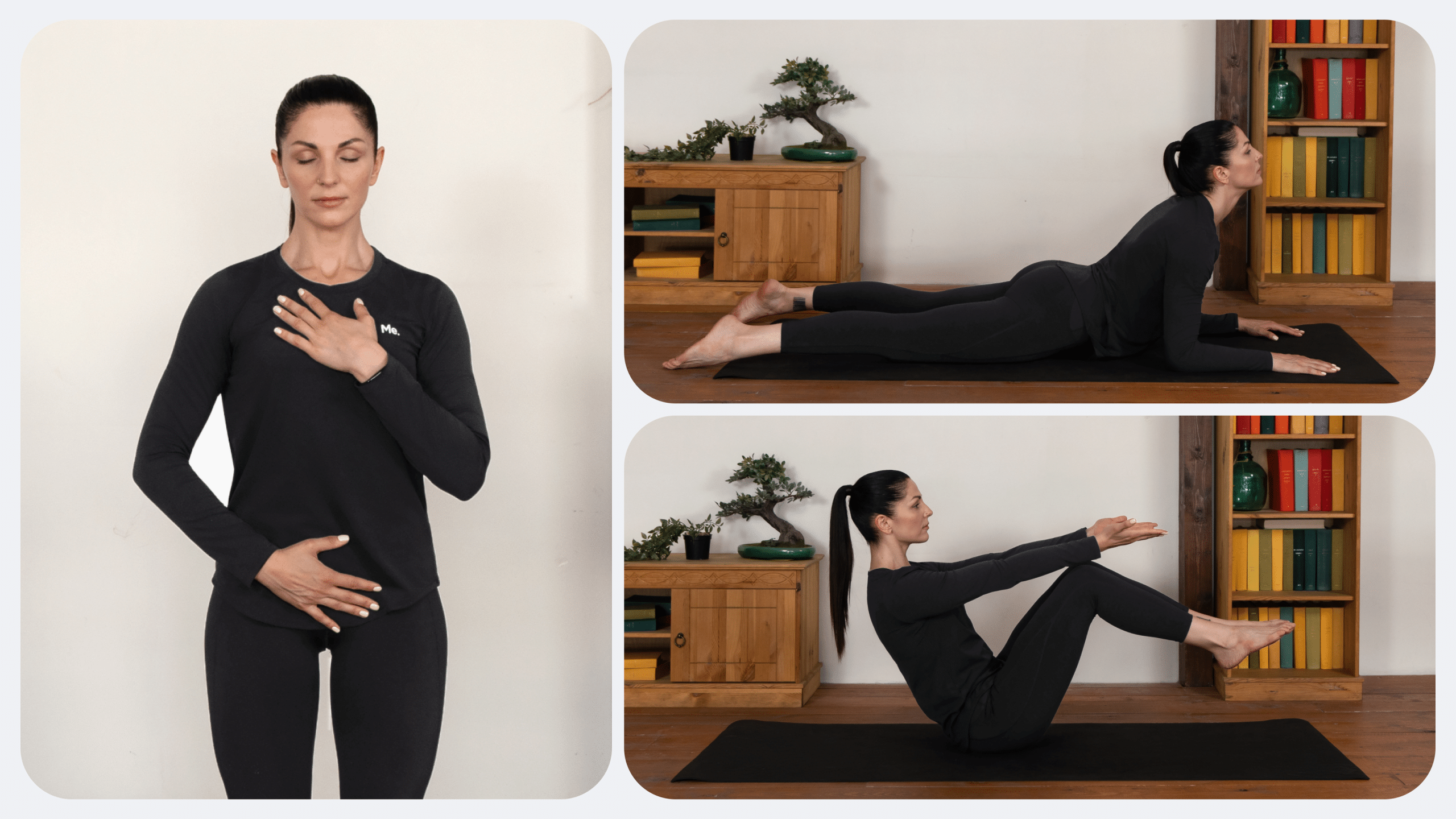Did you wake up feeling a lack of enthusiasm about the day’s work, or did you start doubting whether you should go to the gym this morning? Either way, you’re lacking motivation and need a boost.
Understanding how different types of motivation push you toward certain goals could help you out of bed. Motivation is more complicated than you think. Let’s help you master it.
Types of Motivation With Examples
Let’s look at the ten major types of motivation before helping you find the motivation style that works for your unique situation. Half of these are extrinsic and half of these are intrinsic.
Extrinsic Motivation
Extrinsic motivation is the desire to achieve a goal that offers external pressure, reward, or validation (10). So, you pursue a goal to gain compensation from an employer, or you wish to avoid punishment by losing your job if you don’t meet the employer’s goal. You’ll find the five types people use to achieve their desired outcomes.
Affiliation Motivation
Koestner and McClelland describe affiliation motivation as the desire to establish, maintain, or restore acceptance among peers (13). The need to belong or find validation from others relies on external approval.
Example: You spend more time at the gym pursuing fitness because you want new friends to like or accept you.
Expectancy Motivation
Expectancy motivation is when you expect specific results only external people can bring (3). You expect that life’s fair and put as much effort in as possible to enhance your performance expecting good returns.
Example: You work hard to improve your performance, thinking your boss will notice on their own and reward you substantially.
Yanking yourself back in shape has never been so easy with our game-changing fitness app! Start transforming your life with BetterMe!
Incentive Motivation
Forbes shares many ideas on how you can experience incentive motivation if your boss wants you to achieve a goal they set (1). Ultimately, incentives like money, promotions, bonuses, and getaways motivate you by making you desire something someone else gives.
Example: Your boss motivates you by incentivizing you to get that promotion with a big paycheck if you bring in a new client. However, if you’re pursuing this because you enjoy the challenge, one motivation overlaps with another.
Fear Motivation
Research shows that fear can be a huge motivator in people’s lives and in different circumstances (14, 6, 4). Fear leads you to do anything to avoid an undesirable outcome. Avoiding tasks someone said you must ignore because they threatened to fire you is external. Still, internal fears can also motivate you.
Example: You spend your bonus on car repairs after hearing a noise, even though you wanted a new suit for work. Sometimes, fear helps you prioritize needs before desires.
Power Motivation
Researchers explain power motivation as the desire to hold influence over others (11). External influence threatens your influence over others because you need validation from them. It’s not a bad motive if used correctly.
Example: You compete for a management position, thinking your ideas will boost the company’s culture and profit. You’re seeking power but also considering everyone.
Intrinsic Motivation
Intrinsic motivation is an inner force that moves toward something that satisfies your needs (10). It has no external influence. Your desire to achieve a goal is an internal reward or challenge. For example, you strive to work hard on your body conditioning because wellness means everything to you. Let’s discover the five types of intrinsic motives.
Achievement Motivation
Achievement motivation is the opposite of power motivation and is an intrinsic motive (10). The entire basis is that someone pursues a goal to satisfy their needs to grow, evolve, or develop, whether finishing a course or losing weight. The result matters.
Example: Using motivational techniques for personal growth is an intrinsic pursuit for achievement (15). No one benefits more from personal development than you. The innate driver is intrinsic because it’s personal.
Attitude Motivation
Attitude motivation is a positive intrinsic force that drives you into action (10). The intrinsic part means you want to see others succeed because it makes you feel good. You have an attitude to change the world.
Example: You start motivating another person in your gym because success isn’t only about you. Instead, you wish to see everyone succeed.
Competence Motivation
Learning motivation is intrinsic (7). Someone with competent motives finds pleasure and action in anything that helps them grow, progress, learn, or enjoy the process, often not focusing on the outcome.
Example: Someone learning gentle chair yoga for beginners and seniors is on a learning journey with intrinsic drivers (16). You want to increase your fitness and endurance. However, the reward is learning and becoming more competent, not the result.
Creative Motivation
It is said that creative motive is intrinsic because passion drives it. The more people are interested in something, find enjoyment and satisfaction from it, the more they are interested in the challenge of it (12). The intrinsic side is the need to express your passion in any way possible. The smaller extrinsic side is when people validate your success and support future efforts.
Example: An intrinsic example is when you design a vision board for your wellness goals. The extrinsic example is your partner complimenting the board and asking how to help.
Physiological Motivation
Physiological motivation is intrinsic because it leans toward Maslow’s theory, which starts with basic human needs (8). It’s internal because you’re the one who must survive. It only becomes extrinsic when you rely on someone to feed you because you’re bedridden.
Example: A senior using a 21-day pilates wall workout to improve balance and coordination while enhancing flexibility and range of motion is intrinsic (2). Also, it’s a physiological need because women over 70 need specialized exercises to maintain healthy joints.
Read more: How to Turn Exercise Motivation Into Real Actions?
What Is the Best Type of Motivation?
Different types of motivation include intrinsic and extrinsic factors. Research has revealed how people with lower self-reported intrinsic motivation activated neural pleasure centers while having external motivation (9).
The brain’s pleasure centers didn’t activate, but the study didn’t use traditional intrinsic, pleasurable motivators. Instead, the external reward proved how an external motive alone might not motivate you enough. The researchers confirm blending both would work better to encourage you.
What Are Your Motivational Styles?
Understanding the styles, major types, and theories may help you determine which suits you. No shoe fits all goals, lifestyle changes, career desires, or wellness pursuits. Instead, you must discover all the secrets behind motivational styles you can master.
Motivation Strategies
Motive-blending strategies are suitable for using multiple motives for specific situations. You’ll find two examples here to inspire customized strategies for any goals you desire.
Types of Work Motivation Strategies
Blend any of these motives for work:
- Achievement motivation
- Attitude motivation
- Competence motivation (7)
- Creative motivation
- Expectancy motivation
- Incentive motivation
- Power motivation (11)
Types of Wellness Motivation Strategies
Blend any of these motives for wellness:
- Achievement motivation
- Affiliation motivation (13)
- Attitude motivation
- Creative motivation
- Incentive motivation (1)
- Learning motivation
- Physiological motivation (8)
Insert examples of what it looks like to blend these
If you wish to cinch your waist, tone up your bat wings, blast away the muffin top – our fitness app was created to cater to all your needs! BetterMe won’t give excess weight a chance!
FAQs
What Are the Different Types of Motivation in Psychology?
Researchers have focused on two primary types of motivation. Intrinsic motivation involves any strong desire to take action for self-satisfaction. It includes achievement, attitude, competence, creativity, and physiological motivation. Extrinsic motivation involves XXX. It includes affiliation expectancy, incentive, learning, and power motivation.
What Type of Motivation Is the Most Effective?
The best motive is to blend multiple types for specific situations. The brain’s pleasure centers didn’t activate with extrinsic motivation alone (5). Hence, extrinsic rewards alone might not motivate you enough to take action or solve problems.
The Bottom Line
Motivation doesn’t run linearly through your mind. Hence, you must understand what drives various forms of motivation and how each one can work in your favor. Blending multiple types or using a balanced state of arousal motivation will do wonders. Pick your motives, and start using them today to achieve anything you desire.
DISCLAIMER:
This article is intended for general informational purposes only and does not serve to address individual circumstances. It is not a substitute for professional advice or help and should not be relied on for making any kind of decision-making. Any action taken as a direct or indirect result of the information in this article is entirely at your own risk and is your sole responsibility.
BetterMe, its content staff, and its medical advisors accept no responsibility for inaccuracies, errors, misstatements, inconsistencies, or omissions and specifically disclaim any liability, loss or risk, personal, professional or otherwise, which may be incurred as a consequence, directly or indirectly, of the use and/or application of any content.
You should always seek the advice of your physician or other qualified health provider with any questions you may have regarding a medical condition or your specific situation. Never disregard professional medical advice or delay seeking it because of BetterMe content. If you suspect or think you may have a medical emergency, call your doctor.
SOURCES:
- 14 Ways To Use Incentives To Motivate Employees At Large Businesses (2021, forbes.com)
- 21-Day Pilates Wall Workout: Will It Work For Seniors (2023, betterme.world)
- A Comparison of Equity Theory and Expectancy Theory and Some Implications for Managers in a Global Work Environment. (2010, researchgate.net)
- Appealing to fear: A meta-analysis of fear appeal effectiveness and theories (2015, pubmed.ncbi.nlm.nih.gov)
- Diminished Neural Responses Predict Enhanced Intrinsic Motivation and Sensitivity to External Incentives (2015, pubmed.ncbi.nlm.nih.gov)
- Fear Appeal Theory (2012, researchgate.net)
- Learning Motivation: Motivation of Learning (2021, researchgate.net)
- Maslow’s Hierarchy of Needs: Uses and Criticisms (2022, medicalnewstoday.com)
- Motivational Orientation Modulates the Neural Response to Reward (2010, pubmed.ncbi.nlm.nih.gov)
- On What Motivates Us: A Detailed Review of Intrinsic v. Extrinsic Motivation (2022, ncbi.nlm.nih.gov)
- Power Motivation Arousal Promotes Prosocial Behavior in the Dictator Game Depending on Social Presence (2022, ncbi.nlm.nih.gov)
- Stimulate Creativity by Fueling Passion (2012, onlinelibrary.wiley.com)
- The Affiliation Motive (2009, cambridge,org)
- The effect of fear and situational motivation on online information avoidance: The case of COVID-19 (2023, ncbi.nlm.nih.gov)
- The Top 3 Effective Motivational Techniques That Promote Better Life (2022, betterme.world)
- The Ultimate Guide To Gentle Chair Yoga For Beginners And Seniors (2023, betterme.world)










